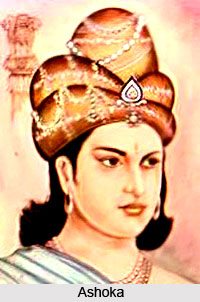 Invasions in Ancient North India began with the invasions of the Greeks. Demetrius, a young and energetic Greek ruler invaded the land and knocked at the doors of Pataliputra, the metropolis of Emperor Ashoka and his successors. This invasion offered an opportunity to the Maurya general Pushyamitra who killed his master Brihadratha and usurped the throne. Punjab and the North Western Frontier Province were occupied by the Greeks.
Invasions in Ancient North India began with the invasions of the Greeks. Demetrius, a young and energetic Greek ruler invaded the land and knocked at the doors of Pataliputra, the metropolis of Emperor Ashoka and his successors. This invasion offered an opportunity to the Maurya general Pushyamitra who killed his master Brihadratha and usurped the throne. Punjab and the North Western Frontier Province were occupied by the Greeks.
Saka kingdom was established in Kashmir. Kashmir became a part of the kingdom of the Saka king Maues. He supplanted from Taxila the rule of the Greeks who continued to thrive on the other side of the Indus. It was evidently due to Parthian pressure that the Sakas of the North Western Frontier Province and the Punjab were forced to move towards the south and it was established in Western India.
The Kusanas maintained a shaky survival in Mathura. They were ultimately driven out by the Nagas in conjunction with several republican states of Rajasthan and the Eastern Punjab. North India was in a highly disorganized political condition. The descendants of
Kanishka carved out a kingdom in the North Western Frontier Province and the Western Punjab. They had to acknowledge the supremacy of the Sassanids of Iran and even the successors of Rudradaman I. Yavana invasion was probably the reason for the downfall of the Imperial Maurya Empire in 187 B.C.
With the rise of the Gupta Empire in the beginning of the fourth century A.D., the history of India enters into a new phase. North India mostly witnessed glorious rule by Chandragupta II and Samudragupta. Maukharis became the Imperial lords after the fall of the Guptas in c. 551 A.D. They had a great clash with the Later Guptas. Krishnagupta is the first king of the dynasty who probably belongs to Sad-vamsa as according to the Aphsad inscription. Krishna Gupta was followed by Harsha Gupta and Jivita Gupta I.
Thereafter North India witnesses the rule of the Vardhan dynasty. Harsha Vardhan was one of the prominent rulers of the dynasty and India reached great heights under his rule. Toramana and his son Mihirakula did rule part of North India. It is believed that Mihirakula`s sovereignty extended up to Gwalior.



















